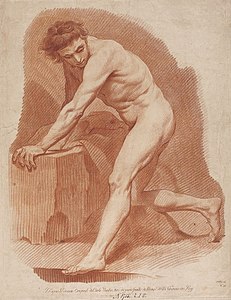Life and work
He was the eldest of seven children born to the miller, Johann Philipp Wille, and his wife, Anna Elisabeth née Zimmermann. He showed an early interest in art; drawing birds and the faces of his classmates. He also copied the illustrations from his father's Bible. Initially, he studied mathematics in Giessen, with the intent of attending a university, but his interest in art prevailed and he began taking lessons from a local portrait painter. This proved to be unsuccessful, so he learned engraving instead and worked for a gunsmith, who taught him how to decorate hunting rifles.
In 1736, he began his traditional journeyman years, wandering through Frankfurt am Main, Worms and Straßburg, among many others, on his way to Paris. During his trip, he met the engraver, Georg Friedrich Schmidt, and the painter, Friedrich Wilhelm Hoeder [ de ], and all three travelled together. He lived there with Schmidt, for several years, until he was accepted at the Académie Royale de Peinture et de Sculpture. During his wait, he decorated rifle stocks and engraved watches.
His talent was noticed by the publisher, Michel Odieuvre [ fr ], who hired him to create nineteen illustrations for his book, L'Europe illustre, contenant l'histoire abrégée des souverains, des princes, des prélats, des ministres, des grands capitaines, des magistrats, des savans, des artistes, & des dames célèbres en Europe, a job for which he was poorly paid. From 1742, he worked for the engraver, Jean Daullé. In 1747, he married Marie Louise Deforges (d.1785). Their son, Pierre Alexandre, became a genre painter.
His engravings of portraits by Nicolas de Largillière attracted the attention of Hyacinthe Rigaud, who commissioned him to create portraits of his wife and Marshal Louis-Charles-Auguste Fouquet de Belle-Isle. These works were what finally established him as a sought-after artist. Many famous painters began to entrust him with creating engravings of their portraits. After acquiring French citizenship, he was designated as an "Engraver to the King". From 1753, he operated an engraving school, where he taught drawing from nature and employed nude models. In 1761, he became a member of the Académie. He also provided engravings for the courts of Denmark and the Holy Roman Empire. Through these clients, and his art dealing, he amassed a considerable fortune, which enabled him to turn his attention from portraits to whatever caught his fancy.
Although he had an impressive art collection, he lost most of his belongings during the French Revolution. In 1793, a cannon was fired too close to his head and he lost his hearing. As a result, he was named a Knight in the Legion of Honor. He also gradually became blind. Efforts to support himself by selling his earlier works failed, as all of his previous clients and collectors were struggling to get by. He died, impoverished, at the age of ninety-three.
Events from the year 1783 in art.
Events from the year 1715 in art.

Jeremias Falck was an engraver of the 17th century Baroque, born and active in the Polish–Lithuanian Commonwealth. He signed most of his over 300 works as J. Falck, sculp., a few as Falck Polonus or Falck Gedanensis.

Vincenzio Vangelisti was an Italian engraver. He was born at Florence. He visited Paris when young, where he became a pupil of Ignazio Hugford and Johann Georg Wille. Emperor Leopold II of Austria invited him in 1766 to Milan, where he became professor in the Brera Academy, and in 1790 first director of the School of Engraving instituted by that prince. He committed suicide, after having defaced his remaining copper plates. Among engravers, who studied under him, were Giuseppe Longhi, who succeeded him as professor, and Faustino and Pietro Anderloni.

Antoine Masson was a French painter, but above all a line engraver, born at Loury, near Orléans.

Alexis Simon Belle was a French portrait painter, known for his portraits of the French and Jacobite nobility. As a portrait artist, Belle's style followed that of his master François de Troy, Hyacinthe Rigaud, and Nicolas de Largillière. He was the master of the painter Jacques-André-Joseph-Camelot Aved (1702–1766).

Charles Clément Balvay, known as Bervic, was a French engraver mainly working in intaglio and exclusively in burin. Due to an error in transcribing the baptismal register, he is also now known as Jean Guillaume Balvay.

Simon-Charles Miger was a French engraver, most notable for the plates he produced for La Ménagerie du Muséum national d'histoire naturelle by Lacépède, Saint-Hilaire and Cuvier.
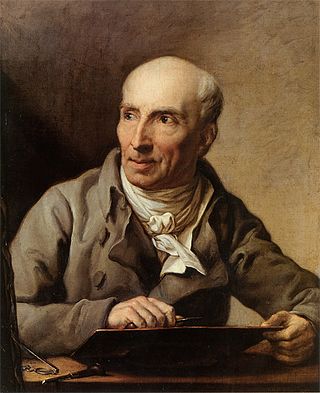
Johann Friedrich Bause was a German copper engraver; primarily of portraits.
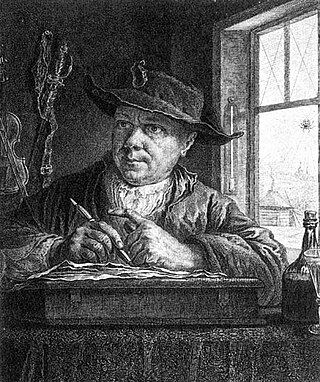
Georg Friedrich Schmidt was a German engraver, etcher and pastel painter, in the Rococo style.

Laurent Cars was a French designer and engraver.

Johann Eleazar Zeissig, also known as Schenau, was a German genre, portrait and porcelain painter, and engraver; director of the Royal Academy of Arts in Dresden.

Johann Gotthard von Müller was a German line engraver.

Johann Elias Ridinger was a German painter, engraver, draughtsman and publisher. He is considered one of the most famous German engravers of animals, particularly horses, hounds and hunting scenes.

Johann Christian Fiedler was a German portrait painter. Some sources give his year of death as 1768.

The Klauber family were engravers and fine art publishers from Augsburg, Germany. Two of the sons of ancestor Franz Christoph Klauber established a catholic fine art publishing company by 1737, together with Gottfried Bernhard Göz (1708–1774), who broke away to start his own business in 1742. Klauber Brothers remained a trade mark until the end of the century, and longer:
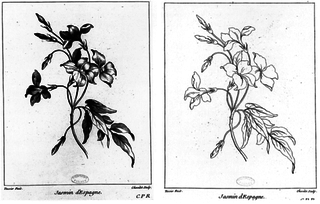
Juste Chevillet (1729–1802) was a French engraver. He is known for his engravings for the Histoire Naturelle of Georges-Louis Leclerc, Comte de Buffon.

Egid Verhelst the Younger was a German painter, draughtsman, sculptor, and engraver.

Antoine-Louis Romanet was a French engraver, designer, and miniaturist.
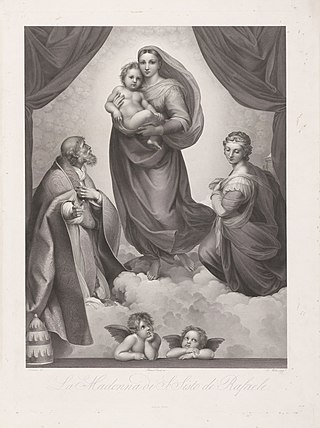
Johann Friedrich Wilhelm Müller was a German copperplate engraver.





